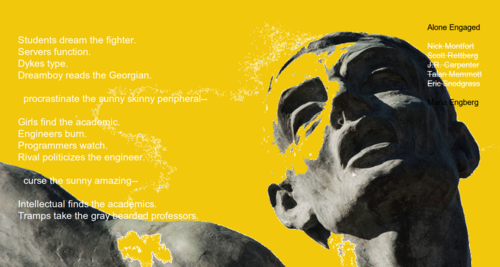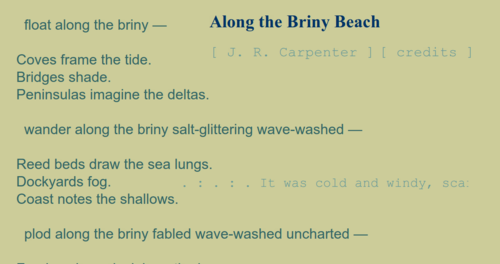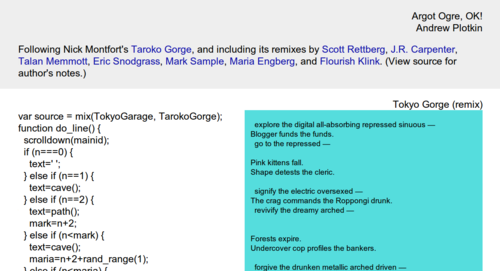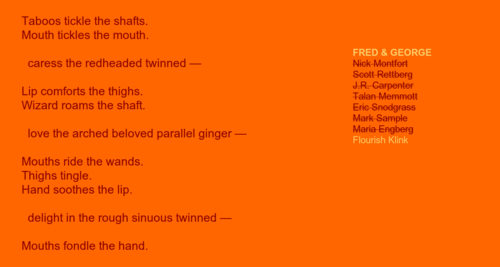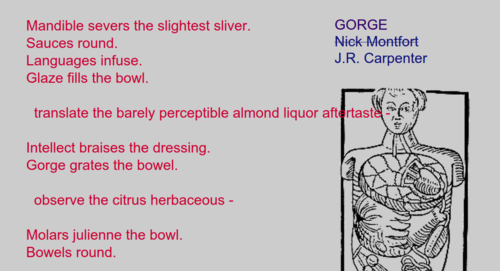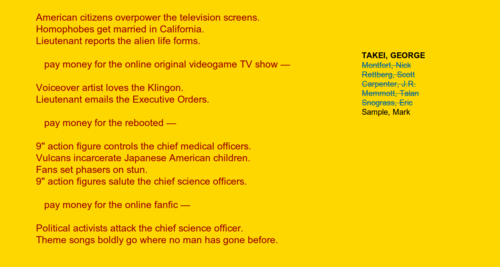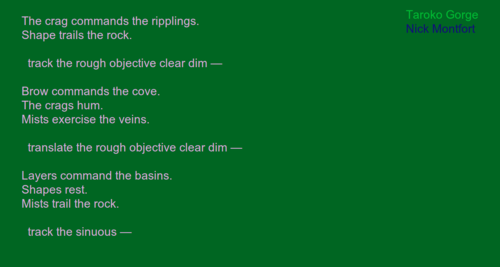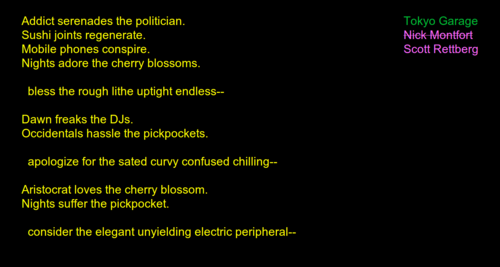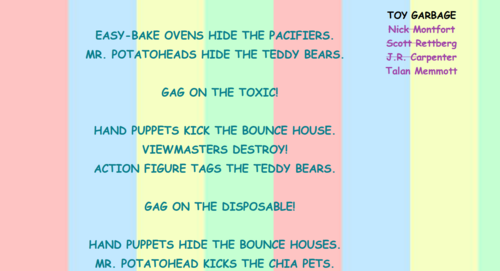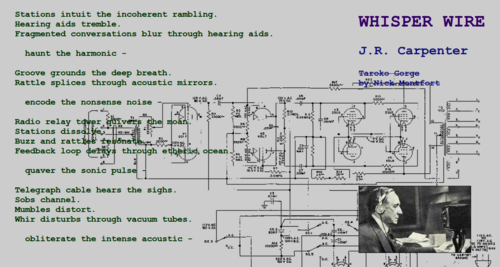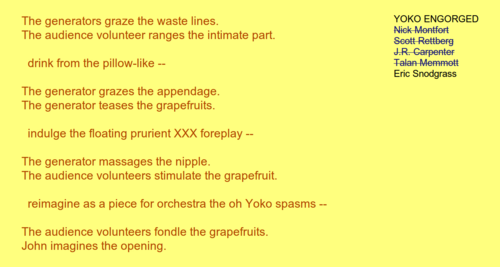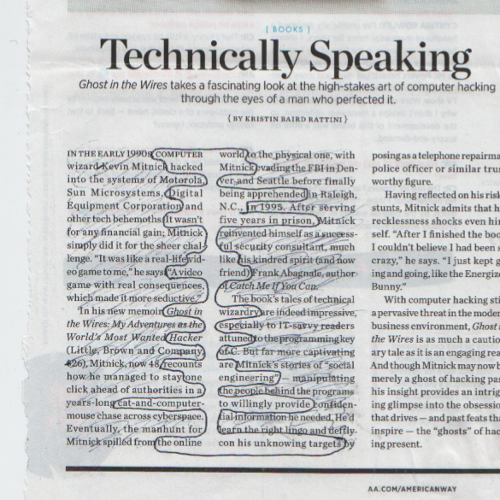I keep hearing about this Believer article about palindromes – actually, it’s mostly an article exposing a particular palindromist to readers’ chortles. The article signals no awareness of the palindrome as a literary form, but I appreciate it pointing me to Mr. Duncan’s “A Greenward Palindrome,” written for my local eco-boutique and charming in its topicality.
A community of practice is a set of people who do the same type of work (writing, art, game development, etc.) and who are at least aware of one another and have some interaction with one another. Poets constitute a community of practice, for instance, or at least several significantly interlocking communities of practice. Poets are aware that there are other poets. They read each others’ work. Sometimes they hate one another, which shows that they care.
Electronic literature authors are literary migrants to the computer, not always of the same genre or movement, and are less established as a single community of practice. But thanks to organizations like the Electronic Literature Organization and events like the E-Poetry festival and the ELO conference, many of them do get to meet each other, talk to each other, and learn about each others’ work and interests. Some specific sorts of practice, such as poetry generation, have much less community around them, of course; but others, such as interactive fiction, have a great deal of healthy community.
Palindromists, I would venture, do not constitute a community of practice. They mostly don’t know each other and aren’t aware of each others’ work, despite the efforts of people like Mark Saltveit, editor of the magazine The Palindromist. Duncan describes palindrome authors as “practicing the invisible craft.” When thinking of the short, canoncial palindromes that have circulated without attribution, this designation makes sense. But in other cases, it doesn’t.
For instance, there are plenty of palindrome books in print for those who look. Here are three from a single press, Spineless Books: 2002: A Palindrome Story by Nick Montfort and William Gillespie, I’d Revere Verdi: Palindromes for the Serious Music Lover by Jane Z. Smith and Barbara Thorburn, and the sublime Drawn Inward and Other Poems by Mike J. Maguire, which contains:
Same Nice Cinemas
Same nice cinemas,
same nice cafe.
We talk late.
We face cinemas.
Same nice cinemas.
There are several palindromes of literary interest online, too – my and William’s 2002 is just one, alongside “Dammit I’m Mad” by Demetri Martin and “The Big One” by Will Helston.
From reading that recent article, one would guess that palindromists aren’t a community of practice because palindrome writing isn’t a practice, but a pathology. The truth is that palindromes make for difficult reading, difficult writing, and unique engagements with language that have been savored by Edgar Allan Poe, Vladimir Nabokov, Harry Mathews, and Georges Perec. So, for those who want to take a break from gawking at personal quirks to read some brilliant texts, read a few of the many palindromes that are out there – works of writing that will wow you coming and going.


